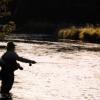Search the Community
Showing results for tags 'grayling'.
Found 6 results
-
With your permission, I will open the topic where I will share interesting nymphs on grayling. On such flies we catch in Siberia)) P.S. Ready to answer your questions)
-
Fishing in Siberia. Difficult road through the pass and mud baths. An interesting small river with labor fishing. Iced water. In fishing, mostly small grayling, a large one could only be caught from the fossa. The variations of RadTag worked on the flies, and the wet variations were partridge orange. All fished on 3-4 class rods. I am)
- 29 replies
-
Hello friends, I propose to share my options for a good Red Tag flies) My collection
-
This is my “go to pattern” that has worked extremely well and simply slays trout. When I first tied it I wondered if it would work, when it did so well I wondered why -- Thus the Dry Wonder Bug. The effectiveness of this fly I believe comes from the color (like the purple haze), the legs, and the wings. Whereas the purple haze is basically a purple adams this fly presents a different profile on the water that trout have a difficult time resisting. Note: This fly is also effective to catch grayling and whitefish. Recipe Wonder Bug (Dry) Hook: Any brand 4X long size 6 to 16 with a fine wire, having as wide a gape as possible or a Mustad 3261 Egg Sack: Black foam Tail: White Goose Biots Thread: Purple 6/0 (70 denier) or larger Body: Purple Heat Shrink 1/8 or 3/16 diameter colored with alcohol ink and tan foam. Note other sizes can be used with smaller hooks – Also purple foam can be used in place of heat shrink. Legs: Medium to fine speckled white rubber centipede leg material Antenna: Brown Mono (optional) Post: White Heat Shrink or Polypropylene Yarn Wing: Saddle feather (white) and white wing material made with heat-n-bond. To see how to make wings with heat-n-bond go to https://unsinkableflies.blogspot.com/2012/02/making-fly-wing-material-fly-tying.html. 1. Cut a single or two twin sections of Heat Shrink as long as the hook shank plus at least a 1/8 inch. Note: Twin sections are used when using smaller Heat Shrink. 2. Cut a section of tan foam approximately the same width as the Heat Shrink. 3. Cover the hook shank with thread. 4. Attach the black egg sack use a drop of super glue to anchor. 5. Attach the goose biots on top of the egg sack 6. Attach the heat shrink at the rear of the hook one section at a time using at least three thread wraps. Use heat to pinch the heat shrink to the hook shank. 7. Attach the foam at the rear of the hook shank, add legs and work the thread up to the eye. 8. Attach the heat shrink and foam at the eye using at least three thread wraps. Add legs. Use heat to pinch the heat shrink to the hook shank and finish forming the air bubble. 9. Add antenna on top of the foam seal with a drop of super glue. 10. Add the wing material. 11. Add the PP post and take 6-8 wraps around the white saddle parachute style. Seal the thread at the hook eye with super glue. 12. Seal the thread at the hook eye with head cement or super glue. Trim off any excess foam and heat shrink.
-
- Go to pattern
- The best fly for MT trout
-
(and 3 more)
Tagged with:
-
In about two weeks I will be moving to Slovakia for a whole year on a mission trip. There are rivers over there with trout and grayling. I was going to see what everyone thinks I should tie up before I leave. I've done a lot of trout fishing but I haven't done any fishing for grayling so I don't know much about it. Any input on what flies I should use would be much appreciated! -Jake
- 13 replies
-
I've searched the Forums and Site, including the Fly Pattern Database, and it appears that no one fishes for this great fighting fish which is a member of the salmon family. Outside of Alaska and the Great Lakes Basin, I am looking for new areas to travel to and fish for this species. Any and all suggestions within the United States are more than welcome. Thank You!
- 24 replies

